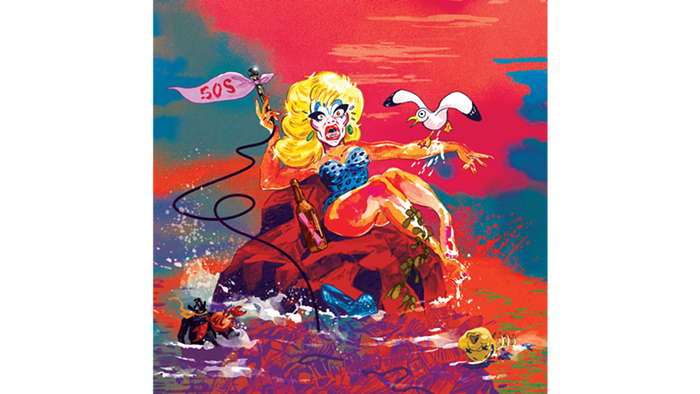Meghan Chalmers-McDonald is new to town, and her sculptures can't yet be found in any gallery. So when she showed me her work, it was in a shared studio space at Radius Community Art Studios where, on a table covered in butcher paper, 15 or so vaguely alien sculptures seemed to drift and sway like the inhabitants of a particularly eclectic tide pool.
Two things about Chalmers-McDonald's work are immediately apparent. The first is the ambiguous relationship of her sculptures to the animals that influence them: Chalmers-McDonald has created an elegant body of work that references marine life without attempting to realistically capture it. Upon viewing her sculptures, it's obvious that the creatures she creates are of the sea—even if you've never seen sea creatures quite like these. The second thing you notice and the thing you linger over, is the near-obsessive level of detail that characterizes each piece.
Chalmers-McDonald showed me an assortment of work created over the past several years, the pieces sturdy or lucky enough to have survived her recent move from Rhode Island. Chalmers-McDonald borrows the textures and structures of marine animals, but freely rearranges these borrowed influences to create unique creatures—work that resembles life without replicating it. "I like things that look almost alive," Chalmers-McDonald says, summing up her own work succinctly.
Cylindrical vases mimic sea cucumbers; lacy bubbles that could be jellyfish perch on tripod-like struts, lending them an unnervingly ambulate quality; demure little snails unfurl insinuating tentacles; vivid glazes inside earth-toned bowls evoke the hidden iridescence of seashells. When I remark on the red, gaping mouth of one little creature—evoking the squishy center of a sea anemone—Chalmers-McDonald laughs. "I decided it has to eat somehow."
As Chalmers-McDonald explains it, her work favors "gestural motions that allow [her] to go back and add extreme detail." Highly textured, many of the pieces look stunningly delicate, though this fragility is belied by their sturdy clay construction. The lacy shade that floats above one creature—half jellyfish, half stingray—took 14 hours to complete by hand, punching each tiny hole individually to create a bubbling, sea-foam effect. Fourteen hours punching holes to create an impression of lightness—that's the diligence of an artist with a specific vision who knows exactly what needs to be done to realize it.
Chalmers-McDonald has been working in ceramics since 2001, and she experiments with various firing techniques, including a "glow-worm" kiln, a highly efficient version (that unfortunately did not make the move) made using a refractory blanket that's quick to heat and cool, and that literally glows in the dark as it reaches temperatures of up to 2,460 degrees Fahrenheit. Other pieces were fired in more traditional electric or wood-fire kilns, though it's clearly the innovative, efficient glow-worm she's passionate about—she hopes to build one in Portland (pending the approval of the fire marshal, of course). Both the glaze and the firing technique affect the work's color, but in general the palette here is sand and sea—dusty browns, sea-foam blues and greens, with occasional splashes of raw, animal red.
The work can be displayed in a number of ways—the hand-sized snails can either lie flat on a shelf or hang on the wall, while some longer, jellyfish-esque creatures are meant to hang from the ceiling—and it's easy to see how one could get attached to these curiously endearing specimens. A photo gallery of Chalmers-McDonald's strange and beautiful pieces can be found online at mchalmersmcdonald.weebly.com.













